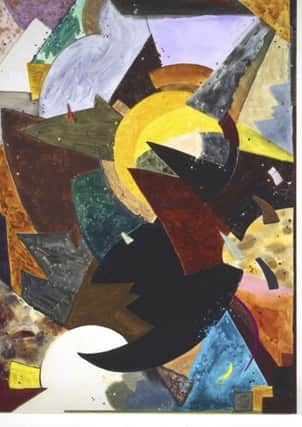Philanthropy and public funding


Last month at around the same time that the Graves Gallery in Sheffield launched its latest exhibition, it was announced that feminist art activists the Guerrilla Girls – who have been exposing inequality in the art world for thirty years now – will be getting their own show at London’s Whitechapel Gallery in October.
Aside from the deep irony that it has taken the art world nearly three decades to offer the collective such recognition, it was a piece of good news in terms of raising awareness of the need to address the imbalance in the representation of women artists in public museums and galleries. As is the new show in Sheffield.
Advertisement
Hide AdAdvertisement
Hide AdGoing Public – The Napoleone Collection presents highlights from the collection of Valeria Napoleone, the world’s foremost private collector of work by contemporary women artists. The exhibition is the latest instalment of Going Public – International Art Collectors in Sheffield, a project launched by Museums Sheffield last year to create a series of exhibitions that would bring to the city works from some of Europe’s finest private collections of 20th century and contemporary art.
More than that, though, the project was established to prompt a national conversation about the future of regional museums and debate the question: ‘how can the public and private sectors work together better?’
A major summit exploring this theme was held in the city last October bringing together 180 leading figures from the cultural sector including museum directors, philanthropists and industry experts. The new show coincides with the recent publication of the summit report.
“We were quite bowled over by how much interest there was in the last Going Public exhibition and how many conversations the summit started,” says Kirstie Hamilton, Head of Exhibition and Display at Museums Sheffield. “Valeria came and spoke at the event and afterwards I wondered whether she might be interested in working with us. My feeling was, we started these conversations, we need to keep them going.”
Advertisement
Hide AdAdvertisement
Hide AdNapoleone, who is Italian and based in London, needed little persuasion. “She was really interested,” says Hamilton. “She has around 300 objects and artworks in all sorts of different media, exclusively by women.
“Although she has loaned out many individual pieces to public galleries and museums she has never been able to show a selection from her collection, so she felt this was a great opportunity. She came and saw the space and loved it and she liked the idea of relating it to the historical collection.”
Napoleone began collecting around twenty years ago in order to champion the work of women artists in a bid to redress the gender imbalance she saw within the art world. Although her approach is less confrontational, Napoleone shares this aim with the aforementioned Guerrilla Girls, founded in New York in 1985, whose regular naming and shaming of galleries where work by women artists is in short supply includes the memorable poster “Do women have to be naked to get into the Met Museum?” For her part Napoleone says that she hopes her collection – which represents some of the most pioneering female artists of the past two decades and ranges from painting and sculpture to photography and film installation – will be part of “a catalyst for change.” Hamilton believes that it will. “Her collection is both incredibly inspiring and a reflection of the range and quality of art being produced by female artists today,” she says. “Valeria is a passionate and knowledgeable collector committed to challenging existing, often male-dominated perspectives on art and the works in her collection are a real testament to that. She also sees herself as a patron and supporter of women artists – that is part of her role, it is about building confidence. She has helped so many artists at pivotal points in their careers.” Amongst the works on display in the show are Joanne Greenbaum’s Fat Yellow (2004), Martha Friedman’s Ladies Room (2010), Margherita Manzelli’s Neobros (1998), Rebecca Morris’ Untitled 01-06 (2006) and Mai-Thu Perret’s Le fée Electricité (with Ligia Dias) 2005.
“It is quite a different kind of exhibition for the Graves Gallery,” says Hamilton. “It is very colourful and vibrant, and quite textural – so it is a great opportunity for us too.”
Advertisement
Hide AdAdvertisement
Hide AdLast year, Napoleone set up Valeria Napoleone XX as a platform for projects and initiatives that work towards increasing the representation of women artists in major public museums, including an on-going commitment to purchase and donate a significant work by a living woman artist to a different UK museum each year. “Her work on that project is so thoughtful,” says Hamilton. “And it’s such a great way for a private collector and philanthropist to work with regional museums.”
Napoleone is indeed a wonderful example of the positive change that can be effected by a philanthropist who is committed to engaging with the public sector and who is excited about sharing the artworks she owns with people who might not otherwise experience it.
And as funding for the arts becomes ever more precarious, especially post-Brexit, public galleries and museums have to become increasingly creative in their approach. “It is now more important than ever that regional institutions nurture international connections,” says Hamilton. “We need to look out to the wider world to make new partnerships.”
While philanthropy such as Napoleone’s is key to helping public museums and galleries thrive, it should never be a substitute for public funding. As Louisa Buck, author of the summit report, concludes: “Going Public repeatedly confirmed that there is a strong desire on the part of private individuals to contribute to our regional museums and galleries... but they are not prepared to plug gaps caused by government cuts... In short, philanthropy is not a silver bullet.”
The Napoleone Collection is at the Graves Gallery, Sheffield until October 15. Admission is free.